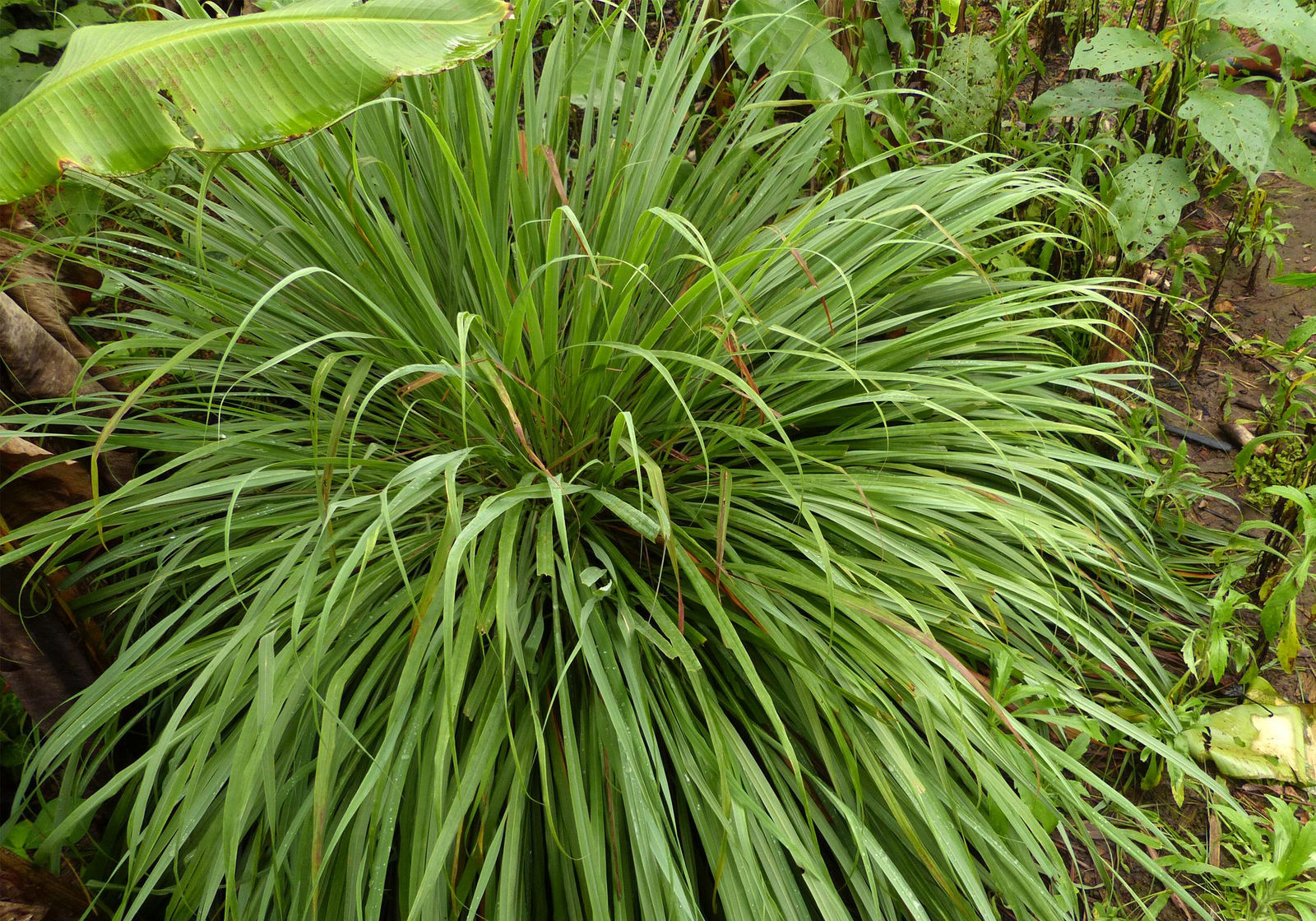Cymbopogon citratus

|
|
Cymbopogon citratus Common Names: Lemon Grass, West Indian Lemon Grass,
Fever Grass Scientific
Classification Kingdom: Plantae Clade: Tracheophytes Clade: Angiosperms Clade: Monocots Clade: Commelinids Order: Poales Family: Poaceae Subfamily: Panicoideae Genus: Cymbopogon Species: C. citratus Binomial Name: Cymbopogon citratus (DC.) Stapf Synonyms: Andropogon cerifer Hack., Andropogon ceriferus Hack., Andropogon citratus DC., Andropogon citriodorus Desf. nom. inval., Andropogon fragrans C.Cordem., Andropogon roxburghii Nees ex Steud. Morphological Description Cymbopogon citratus is a tall, perennial, tufted grass growing 0.5–2 m high,
with a short rhizomatous rootstock. Key features include: · Stems: Numerous, stiff, erect, up to 1.8 m tall, often purplish at
the base · Leaves: Linear, 50–100 cm long, 0.5–2 cm wide, bluish-green,
glabrous, with a strong lemon scent when crushed · Inflorescence: Nodding, paired racemes, 30–60 cm long, subtended by
boat-shaped spathes; rarely flowers in cultivation · Roots: Fibrous, shallow, forming dense clumps The lemon fragrance
arises from citral in its essential oil. Distribution and Habitat Cymbopogon citratus is native to South Asia (India, Sri Lanka) and Maritime
Southeast Asia (Indonesia, Malaysia), naturalized in tropical Africa, America,
and Oceania. It thrives in: · Regions: Tropical/subtropical lowlands, cultivated globally · Climate: Warm, humid, 25–35°C, rainfall 1,000–2,500 mm · Soil: Well-drained, sandy-loam, pH 5.0–7.5 · Elevation: Sea level to 1,200 m It prefers full sun and
tolerates drought once established (Shah et al., 2011). Ethnopharmacology Cymbopogon citratus is a cornerstone of traditional medicine, with studies
validating its uses: · Aromatherapy: Essential oil in Thailand reduces anxiety; inhalation lowers
stress in humans (30% reduction in cortisol) (Leite et al., 1986). · Antimicrobial: Oil in Nigeria inhibits Staphylococcus aureus (MIC 0.5 µL/mL); effective against Candida albicans (Boukhatern et al., 2014). · Anti-inflammatory: Leaf infusion in Brazil reduces paw edema
in rats (50% at 500 mg/kg); citral inhibits TNF-α (Francisco et al., 2013). · Analgesic: Tea in Philippines for headaches; citral reduces pain in
rats (60% at 200 mg/kg) (Viana et al., 2010). · Digestive Health: Tea in India aids digestion; aqueous
extracts relieve spasms in rats (IC₅₀ 0.3 mg/mL) (Figueirinha et al., 2008). · Antioxidant: Used in Ghana for detoxification; polyphenols scavenge DPPH
radicals (IC₅₀ 0.12 mg/mL) (Cheel et al., 2005). Phytochemistry Bioactivity stems from
diverse compounds: · Essential Oils: Citral (65–85%, geranial + neral),
myrcene, geraniol—antimicrobial, analgesic (Boukhatern et al., 2014) · Flavonoids: Luteolin, quercetin—antioxidant, anti-inflammatory
(Francisco et al., 2013) · Phenolics: Chlorogenic acid, caffeic acid—antioxidant (Cheel et al.,
2005) · Terpenoids: Limonene, linalool—calming, antifungal (Shah et al., 2011) ⚠ Toxicity Profile: Generally safe in food amounts; essential oil
LD₅₀ > 3,500 mg/kg in rats (non-toxic orally). Undiluted oil may cause skin
irritation (5% incidence); avoid in pregnancy due to limited data (Oladeji et
al., 2020). Additional Uses · Culinary: Stalks flavor soups (e.g., Thai tom yum), teas, and curries · Essential Oil: In cosmetics, soaps, insect repellents (e.g., against
mosquitoes) · Agriculture: Spent grass as mulch; oil mimics bee pheromones for
beekeeping · Conservation: Not threatened, widely cultivated sustainably References
External Links More Pictures |
|
| Compounds of Cymbopogon citratus |
|
| References |